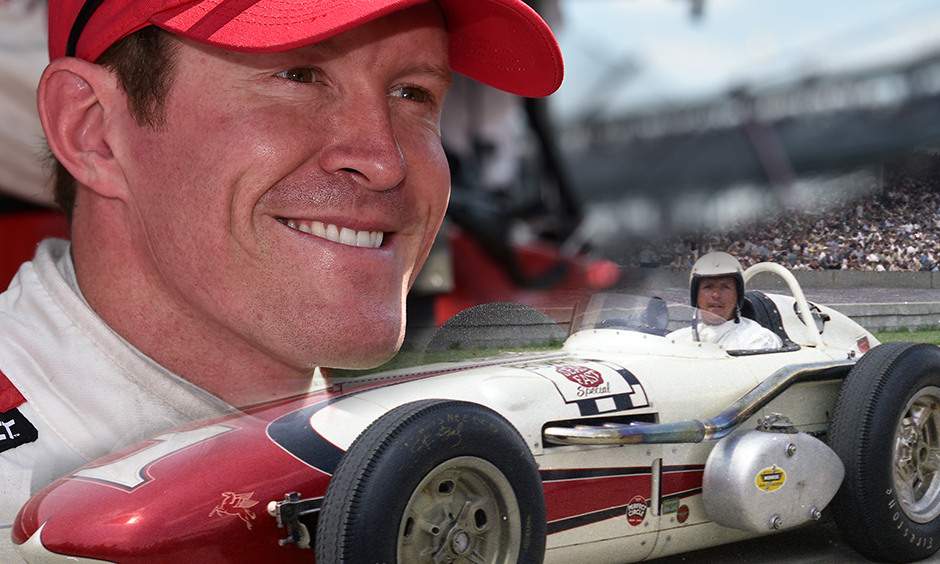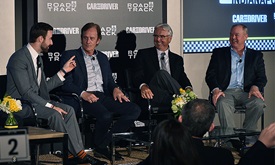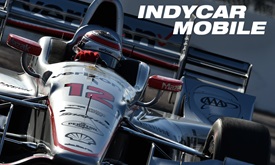Living the dream: today's drivers choose their favorite Indy 500 cars, eras
MAR 25, 2016
When the seat belts get buckled, the helmets donned and the gloves slipped on as 33 drivers prepare to take the parade laps for the 100th Running of the Indianapolis 500 presented by PennGrade Motor Oil this May, there's no doubt that being one of the chosen few in the field as the “Greatest Spectacle in Racing” reaches the century mark will be a career highlight that both grizzled veterans and fresh-faced rookies will never forget.
While the significance of this year's race is not lost on the drivers vying to be a part of it, the first 99 editions of the Indianapolis 500 built a storied history of the race and the famous track that has hosted it since 1911.
Along the way, the month of May at the Brickyard highlighted human drama, celebrated ingenuity and witnessed both the elation of eventual triumph and solemnity of great tragedy.
Everyone who's ever watched the Indianapolis 500 has a favorite driver, car or era that stands out above all others.
But what if a genie offered to send you back in time to compete against any Indy 500 driver from the past 99 races, or get into the cockpit of any car that ever turned a wheel at the Brickyard, or be part of the field any era of Indy car racing? Which would some of this year's crop of 33 choose?

For Canadian James Hinchcliffe, 29, picking any car that ever competed in the Indy 500 gets personal. He reached back into his childhood for his dream, choosing the car driven to milk-drinking glory by compatriot Jacques Villeneuve.
“Man, I would love to go back to 1995 and drive that No. 27 Player's car at the '500.' That would just be the best,” said the No. 5 Schmidt Peterson Motorsports Honda driver.
“I don't want to necessarily say it's 'the one,' but it might be my favorite Indy car of all time. That race with Jacques winning is one of the earliest memories I have of watching a race and really understanding what was happening. And my guy won.”
On that day in 1995, Villeneuve miraculously won the Indianapolis “505,” coming back from being two laps down to take the checkered flag and become the only Canadian to drive into Victory Lane.
“That was a day that really helped make me fall in love with INDYCAR,” Hinchcliffe said. “It's a car that I just think is so beautiful and it's just such a cool piece of history and to get the opportunity to drive that thing around Indy would be awesome.”

While Hinchcliffe went the sentimental route, Team Penske driver Simon Pagenaud is all about the power. When asked, he immediately chose one of the most powerful and dominant cars in the history of the Indy 500: the 1994 Penske PC-23 driven to glory by Al Unser Jr.
“I'd love to drive that one. It would definitely be a big moment in my life,” said the driver of the No. 22 Team Penske Chevrolet. “I just want to feel the pure raw power of it and see how it behaves. It would be fantastic to feel it.”
Although the PC-23 raced in the three 1994 events prior to the Indy 500, Roger Penske and Mercedes had a surprise in store for the rest of the field. It arrived at Indianapolis Motor Speedway sporting a higher engine cover to accommodate the Indianapolis 500-only Mercedes-Benz 500I motor. The PC-23's 3.43-liter pushrod V-8 specially made for May put out somewhere north of 1,000 horsepower and quickly made it the car to beat.
It dominated qualifying and then did the same in the 1994 Indy 500, with Emerson Fittipaldi running a full lap ahead of the field when he brushed the wall and damaged his car with 15 laps to go. His Penske teammate Unser Jr. took the lead and easily won the race, with only the Forsythe/Green Racing entry of Villeneuve finishing on the lead lap.
“It had a different kind of engine that I have never had the opportunity to drive and it was above every other car in its class,” added 31-year-old Pagenaud.
“I don't know if it was an H-pattern gearbox or it was sequential already, but I would love to still drive with a clutch and an H-pattern gearbox.”

While the two younger drivers went for cool cars, veteran Scott Dixon, 35, quickly picked racing against one of the Brickyard's legends: four-time Indianapolis 500 champion A.J. Foyt. Better still, Foyt “luckily spanned about four different decades,” which allowed Dixon a wide-open choice of "500s" to consider.
The four-time Verizon IndyCar Series champion pointed to the era that began in the late 1970s when a transformation in technology in both engines and aerodynamics brought massive changes to the cars and dramatic increases in speeds seen on the 2.5-mile Indianapolis Motor Speedway oval.
“I think it would have been an amazing time to be a part of racing,” said Dixon, the 2008 Indianapolis 500 winner who drives the No. 9 Target Chip Ganassi Racing Chevrolet.
“They went from 180 miles per hour averages to breaking the 200 barrier and then to Arie Luyendyk averaging 236 in 1996. For drivers, you just want to go fast and to be part of that technology shift and the speed shift would have just been insane and so much fun. And, you'd be able to race against A.J., Mario (Andretti), Luyendyk, Rick Mears, the Unsers. These are legends of the sport.”



















